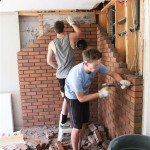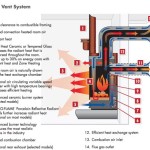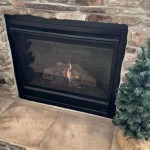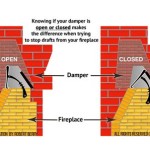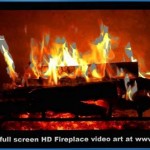Essential Aspects of Gas Fireplace Flue
Gas fireplaces offer the ambience and warmth of a traditional fire without the need for a chimney. However, they require a properly installed and maintained flue system to ensure safe and efficient operation.
The flue serves as a vertical duct that vents the combustion gases produced by the fireplace. It is essential for removing carbon monoxide, a toxic gas that can be harmful to health.
Types of Flue Systems
There are two main types of flue systems for gas fireplaces:
- Direct Vent: These systems have two pipes, an inner pipe carrying the combustion gases and an outer pipe supplying fresh air for combustion. The system vents directly to the outside, eliminating the need for a traditional chimney.
- B-Vent: These systems use a single pipe to vent the combustion gases and draw in fresh air. They connect to a chimney or vent pipe that extends through the roof.
Importance of Proper Flue Installation
Proper flue installation is crucial for the safe operation of a gas fireplace. It ensures that:
- Combustion gases are vented efficiently away from the home.
- Carbon monoxide does not accumulate inside the home.
- The fireplace operates at optimal efficiency.
Factors to Consider
When choosing and installing a gas fireplace flue, several factors need to be considered:
- Fireplace Size and Heat Output: The flue must be appropriately sized to handle the combustion gases produced by the fireplace.
- Type of Flue System: Choose a flue system that is compatible with the fireplace and the home structure.
- Material: Flues can be made of various materials, including stainless steel, aluminum, and galvanized steel. Each material has its advantages and disadvantages.
- Maintenance and Inspection: Regular maintenance and inspection of the flue system are essential to ensure its continued safety and efficiency.
Safety Considerations
Gas fireplaces and flues must be installed and operated according to manufacturer instructions and local building codes. It is also important to:
- Install a carbon monoxide detector near the fireplace.
- Never operate a gas fireplace without proper ventilation.
- Have the flue system inspected by a qualified technician annually.
Conclusion
A properly installed and maintained gas fireplace flue is essential for the safe and efficient operation of your fireplace. By considering the factors discussed above and adhering to safety considerations, you can enjoy the warmth and ambience of your gas fireplace for years to come.

If You Have A Gas Fireplace It May Or Not Chimney Flue

Venting A Gas Fireplace Through Existing Chimney Design Inserts
Gas Fireplace Venting Explained Heat Glo

Vented Vs B Vent Direct Free Dixie S

Do Gas Fireplaces Need A Chimney Fireplace Tips

Enviro Quick Step Under Floor Flue Installation Heatmaster
Gas Fireplace Venting Explained Heat Glo

Gazco Chesterfield 5 Balanced Flue Gas Stove Flames Co

Do Gas Fireplaces Need A Chimney Dreifuss

Flue Types And The Required Gas Fires For Class 1 2
Related Posts


